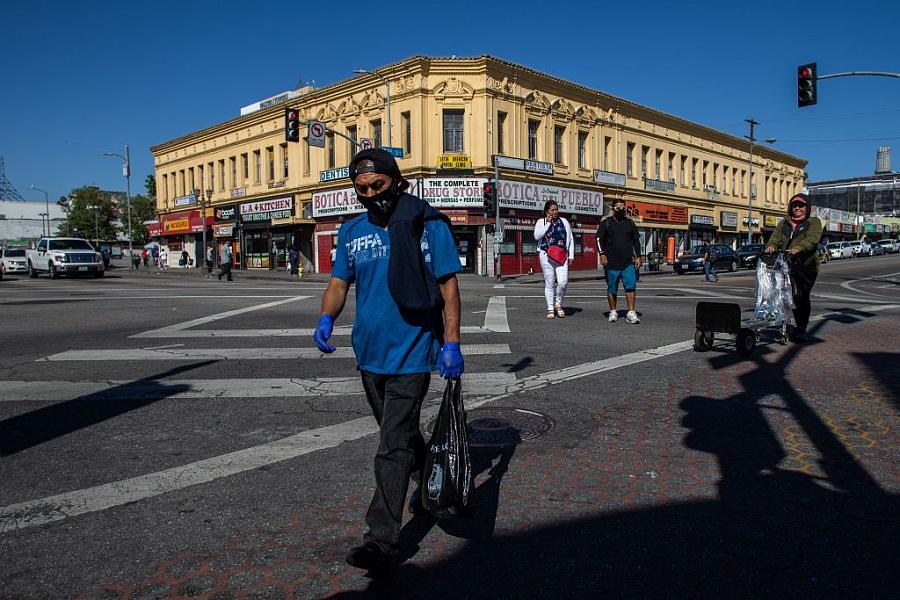Communities of color are being hit hardest by long COVID. What can states do?

(Photo by Apu Gomes/AFP via Getty Images)
More than two years into the COVID-19 pandemic and we’re still learning about the virus called SARS-CoV-2, especially when it comes to the long-term impacts of the disease it triggers. Post-viral illnesses have been associated with many different viruses, including human herpesvirus, Epstein-Barr virus and even flu viruses like H1N1. A four-year follow-up evaluation of people in Hong Kong recovering from SARS found that 40% reported chronic fatigue, so it’s no surprise that many COVID-19 survivors are experiencing similar symptoms long after recovery.
From the beginning, the pandemic has exposed stark racial disparities in California’s health care system, a trend that extends to long-term recovery. For example, when the virus surged in San Francisco during the early stages of the pandemic, “Latino people accounted for up to 60% of cases,” according to STAT News. Latinos in California are also 8.1 times more likely to live in high-exposure-risk households than white people.
Black and Latino people have also been around 10% less likely than white populations to have received at least one dose of a vaccine, although the gap has narrowed somewhat this year, according to data from the Centers for Disease Control and Prevention.
Now experts warn that disparities in long Covid, a post-viral illness that is often dismissed or undertreated, threaten to prevail in communities of color while treatment remains inaccessible. “We expect there are going to be greater barriers to access the resources and services available for long Covid,” Dr. Marcella Nunez-Smith, director of Yale University’s health equity office and a former chair of President Biden’s health equity task force, recently told The New York Times.
Unfortunately, there isn’t a lot of hard data on this issue, which makes it difficult to link discrepancies in care to systemic racism. For example, one doctor quoted in a recent ABC article said, “We don’t have any studies, particularly on long COVID syndrome. But I can tell you, based on my observation, I’ve seen a lot of minorities in my clinic.”
But compiling data and statistics is only part of the battle. Because of the lack of understanding on this issue, many patients have had to self-advocate, educate themselves and form their own advocacy groups to highlight this issue, such as the COVID-19 Longhauler Advocacy Project, the Body Politic Covid-19 Support Group, and the Patient-Led Research Collaborative. I plan to dive into the science and available treatments, so people can further advocate for themselves.
In my reporting for the 2022 California Fellowship, I want to focus on solutions to this issue. I’ve seen a lot of suggestions, such as “strengthening primary care, optimizing data quality, and addressing the multiple nested domains of inequity,” but not a lot of action yet. In Michigan, there’s a task force being formed on COVID and racial disparities. Will California adopt a similar measure? Or how is the state looking to bridge this gap in care?
I also want to put a face to the statistics and help people connect with this issue. I want to talk to people who have been personally affected by this, to put a face to this new chronic illness.
